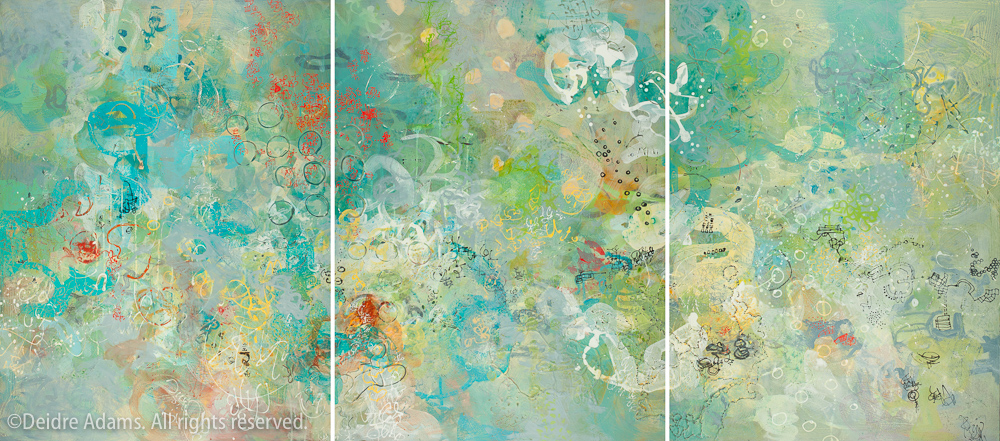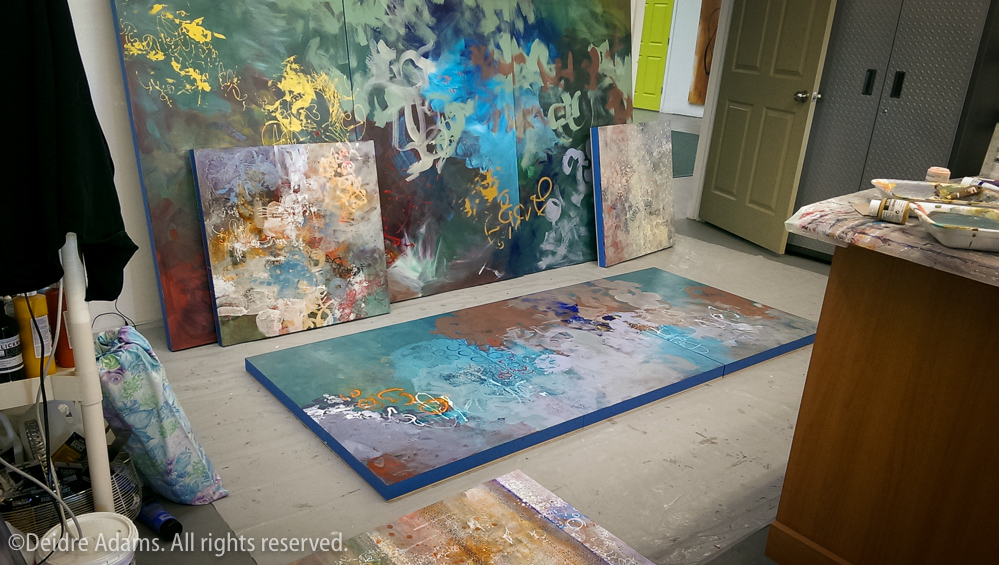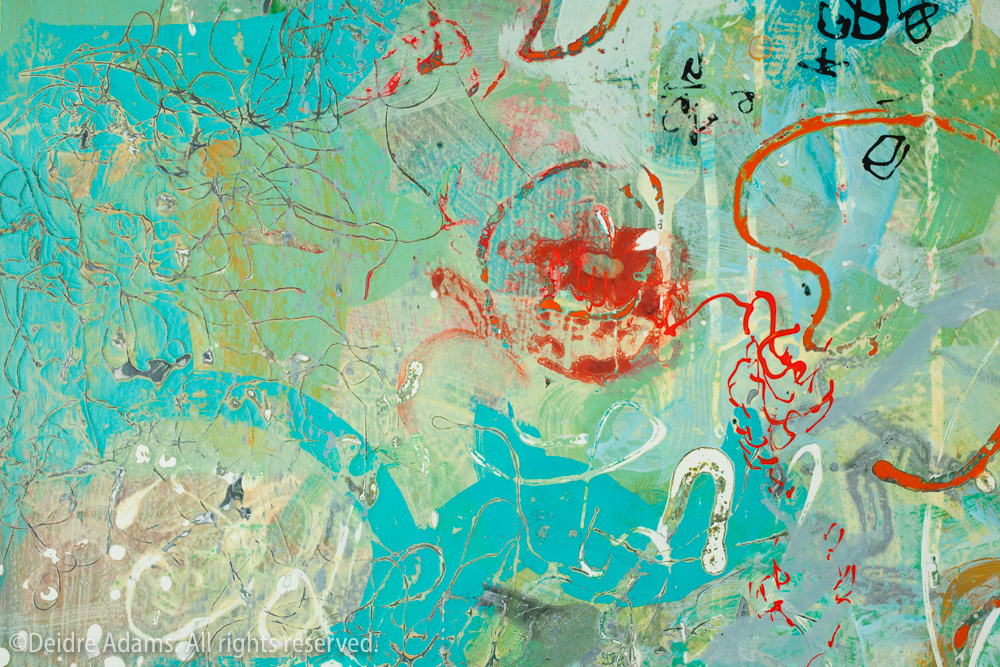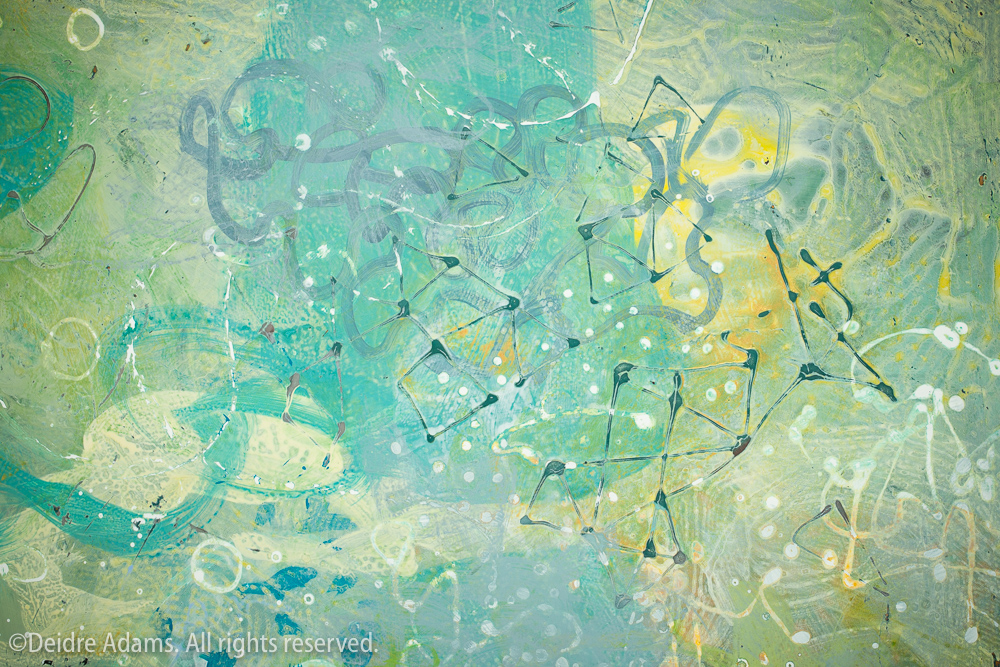
The Original Meaning of Memory, 40 x 90 inches (triptych), acrylic on panel. ©Deidre Adams
Here is another recently completed work. The title comes from some reading I’ve been doing on the malleability of memory, and how memories are formed and stored in the brain. Concepts and stories of repressed memories and false memories are fascinating. I’ve often thought of the brain as a room full of filing cabinets, maybe not too well organized, where some things are kind of hidden in the back and have gotten rather dusty over time. This idea recurs whenever something happens to trigger a memory from many years ago that I’m surprised I still have. But the neuroscience of how memory works is even less organized:
We often talk of memory storage and retrieval, as if memory were filed in a honeycomb of compartments, but these words are really only metaphors. If memory is the reactivation of a weblike network of neurons that were first activated when an event occurred, each time that network is stimulated the memory is strengthened, or consolidated. Storage, retrieval, consolidation — how comforting and solid they sound; but in fact they consist of electrical charges leaping among a vast tangle of neurons,
In truth, even the simplest memory stimulates complex neural networks at several different sites in the brain. The content (what happened) and meaning (how it felt) of an event are laid down in separate parts of the brain. In fact, research at Yale University by Patricia Goldman-Rakic, Ph.D., has shown that neurons themselves are specialized for different types of memories — features, patterns, location, direction. “The coding is so specific that it can be mapped to different areas…in the prefrontal region.”
—From “It’s Magical, It’s Malleable, It’s … Memory,” Psychology Today, Jan. 1, 1995
Apparently, I only took one in-process photo while working on this painting, and it was more about getting a general shot of the studio. This is from October 2015.
This one came together for me less painfully than some of them do. I enjoyed experimenting with some new markings and techniques, and I was really happy with this combination of colors. I’ve always loved turquoise, but I didn’t want it to be too “pretty.” So I decided to use some gray, created by blending the turquoise with its complement. I like the retro feel of these colors together.
Here are some detail shots.






I’m very inspired by your post about this painting, Diedre. I’ve been thinking about pulling out my oils that have been languishing in storage for eons and this is propelling me closer to taking action.
Thanks, Leslie. I’m a firm believer in working with more than one medium. I think it keeps us from getting stale or tired. I’ll be curious to see what you do with them!